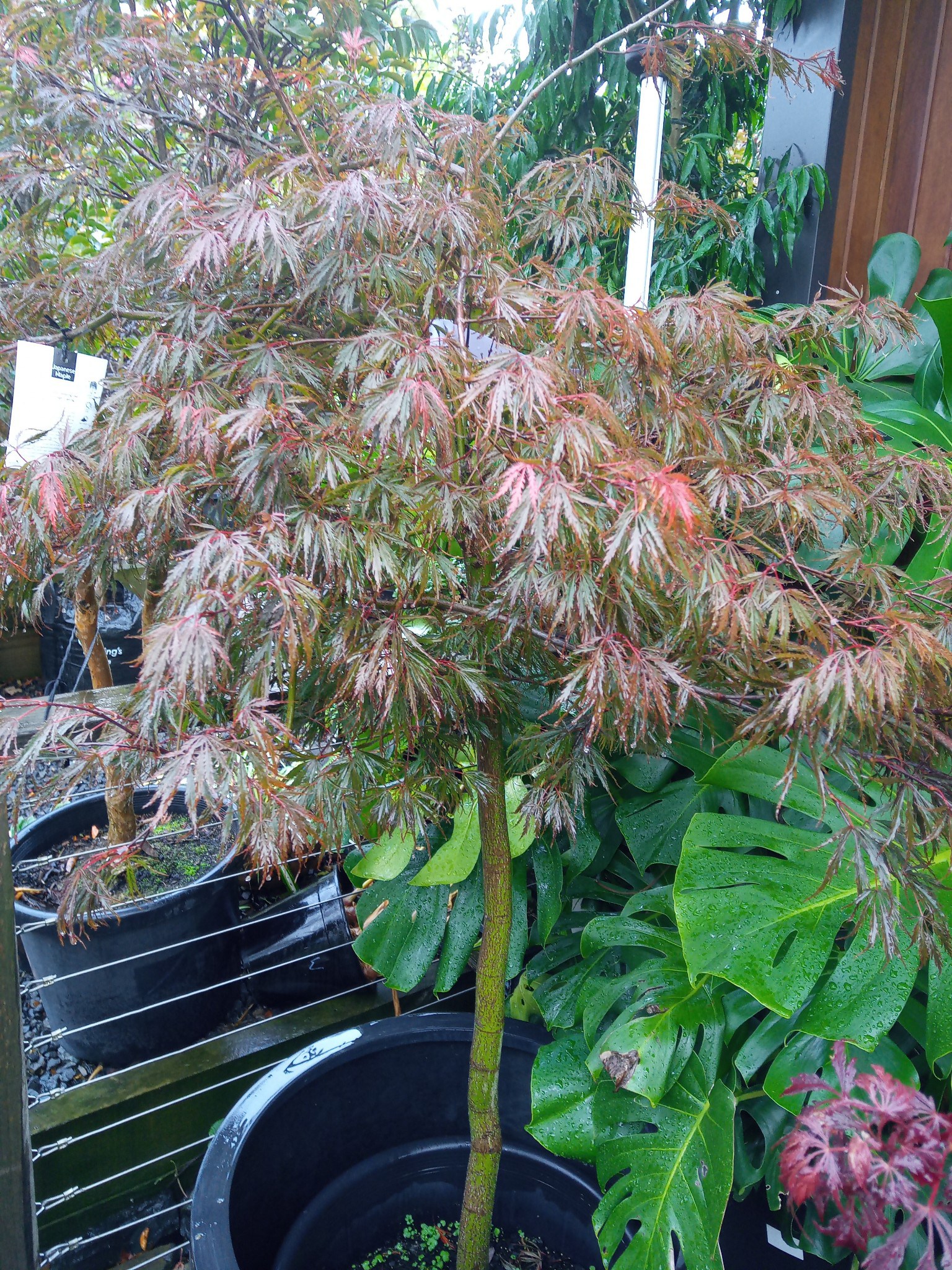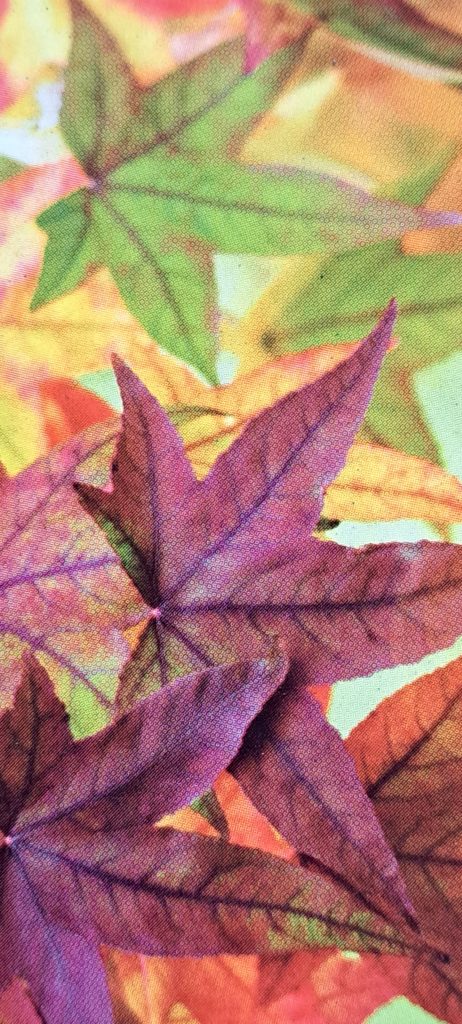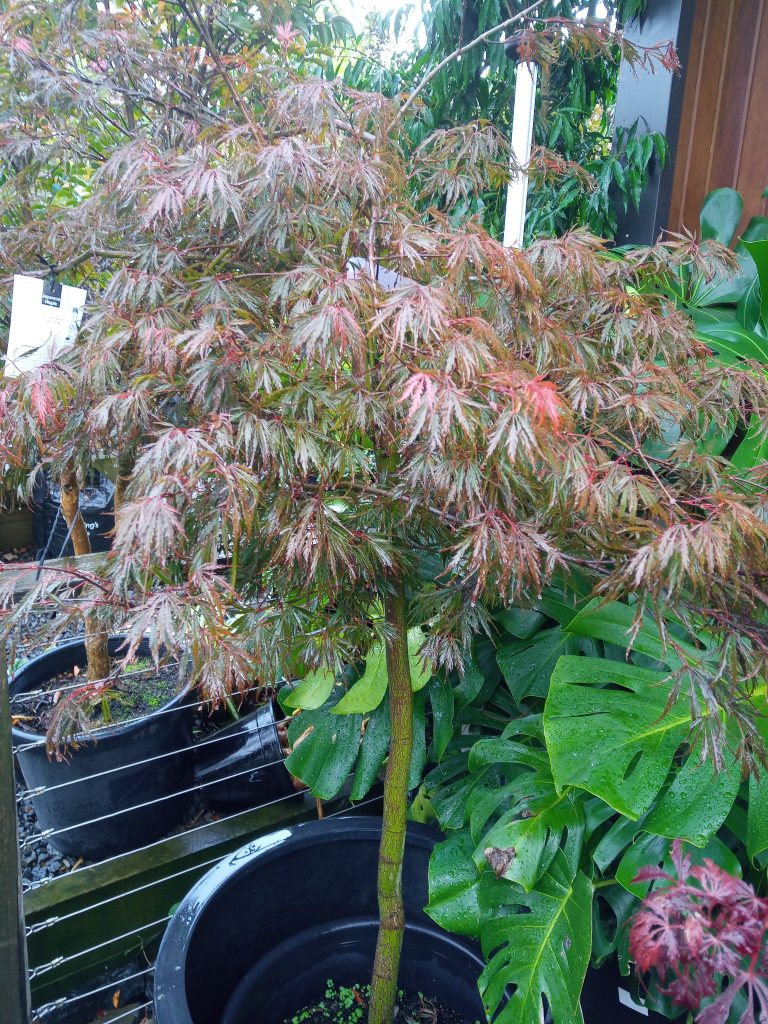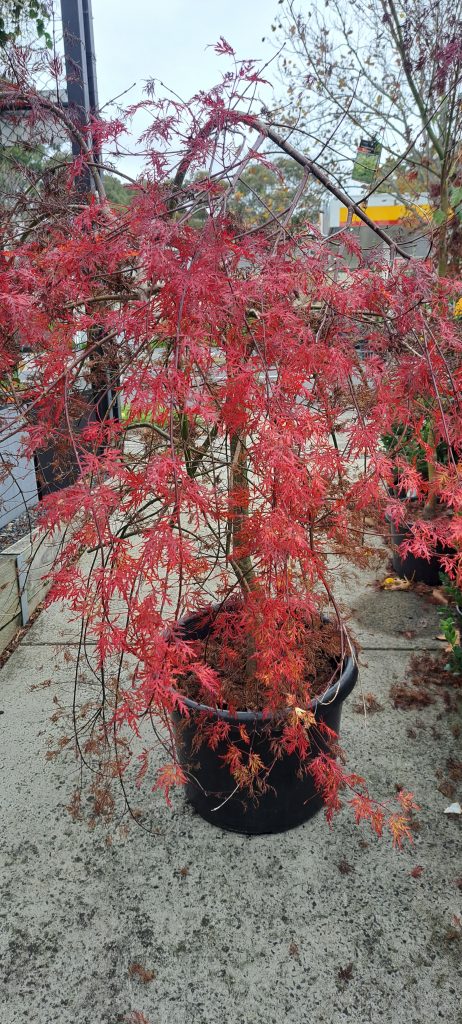
Maples are a large family of trees that are among the most popular plants used in gardens of all shapes and sizes. They are most famous for their spectacular autumn colours, but provide much more such as shade and informal screening.
PLANTING AND CARE OF MAPLES
As there are so many types of these trees, their specific care can vary. But generally speaking maples originate in colder climates such as Japan, North America and Europe. So, they prefer soil that can retain moisture in Summer but drains in winter so that conditions don’t become boggy. In warmer weather they prefer deep regular watering to help them cope with hotter dryer weather and winds.
To plant a maple, dig a hole up to twice the diameter of the maple’s rootball and slightly deeper. Once the tree is in the hole, backfill around rootball with a 50/50 mix of compost/planting mix and the original soil. Water in well and the job is done! Staking is usually unnecessary unless it is a windy position and the tree is vulnerable to damage.
Feed your maples twice a year in Spring and Autumn with quality all purpose fertiliser. Mulching with bark or straw is very important for maples as it keeps the roots cooler and damper in in hotter weather. If pruning is necessary to modify the tree shape or reduce it’s size, I recommend doing it in early spring as the growth response will be more reliable.
Maples can be easily grown in pots, the key to success is matching the chosen tree variety with an appropriate size pot that will allow the tree to grow and develop into the future – and hold enough soil moisture in Summer to keep the tree happy.

JAPANESE MAPLES
The most popular group in the maple family, these can still come in a great variety of sizes, leaf colours and leaf shapes. Generally speaking Japanese varieties will grow smaller than Canadian or European maples. This group includes many dwarf and weeping varieties. They are unlikely to be at their happiest in very hot and dry situations and exposed to hot winds. So plant them in a spot with afternoon shade or filtered sun. If they are to grow in full sun, include lots of organic matter in the soil, mulch well for summer and water well in hot weather.

-ACER PALMATUM
The classic Japanese maple, palmatum is a green leaved small tree growing 4-6m. In Autumn the foliage will turn shades of red, orange and gold creating a brilliant display. Reliable and easy to grow.

-ACER SENKAKI
The coral bark maple is famous and unique for the stunning scarlet colour its trunk and branches turn in winter – giving a gorgeous ’painted’ effect when colour is in short supply in the garden. A slightly taller Japanese maple reaching 6m, Senkaki’s spring foliage is a lighter green turning an attractive golden shade before falling in Autumn.
-Acer Atropurpureum
Probably the most famous of the purple leaf maples Atropurpureum is never green – emerging with striking Violet purple leaves in Spring which keep their colour until going a brilliant red in Autumn. Atro only grows to about 3m, making it easy to grow in a large container. It is excellent to provide colour contrast among more common green leaved plants.
-Acer Osakazuki
Growing to 4m, this green leaved variety is mostly chosen for its stunning vivid red Autumn foliage, although in some years the leaves turn more yellow than crimson. Larger leaves than palmatum are attractive for 3 seasons of the year.

-Acer trunkatum
Shantung Maple is from China. Growing to 7m, it has sightly bigger leaves than the varieties above. It is fine in full sun, gives a spectacular display of Autumn colour and even has pretty yellow flowers in Spring! A fabulous choice.
-Acer Shaina
Probably the most popular dwarf maple, Shaina has deep plum coloured leaves in Spring and Summer; then turns a brilliant red in Autumn. Only growing to about 2m, Shaina is an excellent choice for pots.

-Acer Inaba Shidabe
A classic weeping maple, its fine ferny leaves are purple in Spring/Summer, then display spectacular scarlet foliage in Autumn. Like all weeping maples, Inaba essentially won’t grow any taller after planting. So a lower growing maple that is great in containers.

-Acer Emerald Lace
Like a green version of Inaba Shidare but with even finer leaves, Emerald Lace is another weeping maple great in either pots or the garden bed. The foliage is a beautiful claret colour in Autumn.

CANADIAN MAPLES
Canadian maples generally grow larger than their Japanese cousins, so are usually used as a centrepiece tree in a lawn, garden bed or nature strip. They make excellent cooling shade trees for Summer, and are almost unmatched for the brilliant display of red leaves in Autumn. These trees are generally happier in full sun than Japanese varieties.
-Acer Autumn Blaze
A tall tree to 12m, its v shaped habit gives it a more upright habit. A beautiful shade tree giving a mesmerising Autumn display.
-Acer October Glory
An alternative to Autumn Blaze with a more rounded habit, October Glory is beautiful to sit under on a hot day. The foliage goes a spectacular scarlet in Autumn that is unforgettable.
OTHER MAPLES
-Acer Crimson Sentry
A European maple noted for its upright narrow habit, its dark purple, large leaves make it an excellent alternative to Pyrus Capital. Hardy in full sun, it is a great deciduous choice for planting along fencelines as deciduous screening.
-Acer Kelly’s Gold
For something a little different Kelly’s Gold grows to about 6m and is fine in full sun. In Spring and Summer, the foliage is a very pretty Yellow/Lime Green tone and will turn a soft yellow in Autumn. Great as a small/medium shade tree or in a garden bed among darker green foliage.

